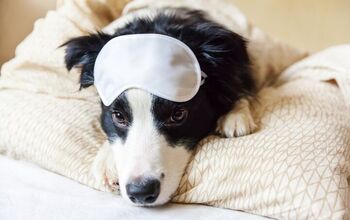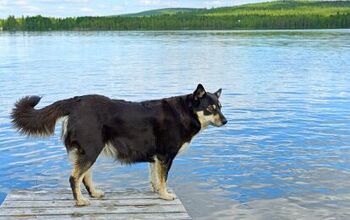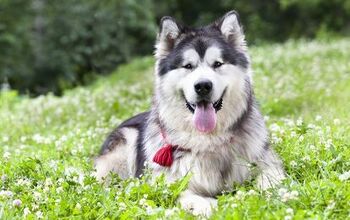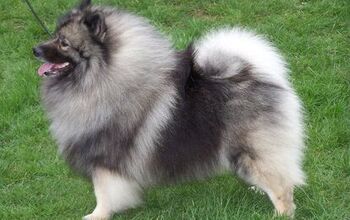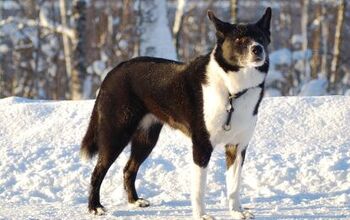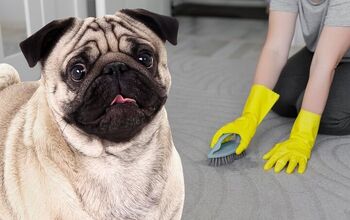Finnish Spitz


About Finnish Spitz
When you first see the Finnish Spitz you might think it looks like a Husky with brown hair. While it is true that both of these breeds are of the Spitz-type, this dog was developed for hunting rather than sled-dogging. In many ways, the Finnish Spitz resembles the fox with its reddish brown coat, narrow snout, and bushy tail but it is incredibly friendly and it gets along well with children. If you are interested in a dog breed that looks a little wild but is gentle at heart, consider the Finnish Spitz.
The Finnish Spitz was developed for hunting rather than sled-dogging.
As the name suggests, the Finnish Spitz was developed in Finland and it shares much of its history with other Spitz-type breeds that were developed in the Arctic region. The Finnish Spitz in particular was bred from Spitz-type breeds found in Russia thousands of years ago, used by Finno-Urgian tribes for hunting small game. In Finland, this dog is known as the Suomenpystykorva and it is the country’s national dog breed – he has also been known as the Finnish Barking Bird Dog due to his unique vocal tendencies. The breed was officially named the Finnish Spitz in 1891 and its recent development was focused primarily on hunting small game, particularly birds.
The breed shares much of its history with other Spitz-type dogs though it was specifically bred from Russian Spitz-type dogs that were used for hunting by Finno-Urgian tribes.
The Finnish Spitz is a small- to medium-sized breed so he should be fed a high-quality commercial dog food diet formulated for dogs of his size. It is also important to consider that this breed is very active so you may need to feed him a working or active breed formula to meet his high energy needs.
The Finnish Spitz is a smart and active breed, so they generally respond well to training.
The Finnish Spitz is a smart and active breed, so they generally respond well to training. The key, however, is to start as early as possible to get the breed’s barking tendencies under control. This breed is generally friendly by nature but they can be a little aloof around strangers, so early socialization is recommended. They respond well to positive-reinforcement training methods with adequate repetition and consistency. These dogs are capable of learning new things quickly so take advantage of that during the first few months you have with your puppy.
This is a medium-sized breed, standing an average of 15 ½ to 20 inches tall and weighing between 20 and 35 pounds at maturity.
One thing you need to be aware of with the Finnish Spitz is that they have a tendency to bark at everything, unless you train them not to from an early age. These dogs are active and energetic and they can take a bit longer to mature than other breeds. These dogs are friendly and gentle with family, though they tend to be a little aloof around strangers. They get along well with children and they can be affectionate with family.
Like most Spitz-type breeds, the Finnish Spitz is generally healthy and hardy. Like all dog breeds, however, the Finnish Spitz is prone to developing certain health problems. Some of the conditions known to affect this breed include epilepsy, hip dysplasia, patellar luxation, diabetes, hypothyroidism, cataracts, and elbow dysplasia.
The average lifespan for the Finnish Spitz is between 12 and 15 years which is on-par for other dog breeds of its size.
Because the Finnish Spitz was developed as a hunting breed, these dogs have high energy levels and fairly high needs for exercise. This breed requires at least 30 minutes of moderate to vigorous exercise daily and he will appreciate being trained for hunting or other dog sports.
Like most Spitz-type breeds, the Finnish Spitz is generally healthy and hardy.
The Finnish Spitz belongs to the Non-Sporting Group for the AKC, and the Hound Group for both the United Kennel Club and The Kennel Club in the U.K.
This dog is easy to identify for its thick, double coat of reddish-brown fur. In many ways, the Finnish Spitz resembles a wild fox because it is slim of build with a narrow snout and thick fur. The coat consists of a soft, dense undercoat with longer guard hairs measuring 1 to 2 inches long. The outer coat is no longer than 2 ½ inches and the tail is heavily plumed and carried up over the back. These dogs blow their coat twice a year and they shed to a fair degree. Regular brushing and grooming is recommended.
The average litter size for the Finnish Spitz breed is 3 to 6 puppies, with 4 being the average. These puppies are rambunctious when they are little but they are also very quick to learn new things. Start your Finnish Spitz puppy with socialization and training as early as possible, especially if you want to get his barking under control. Finnish Spitz puppies are often born with dark grey, black, or brown fur but they develop a golden-red color as they mature.
Photo credit: rodimovpavel/Bigstock

Kate Barrington is the loving owner of two cats (Bagel and Munchkin) and a noisy herd of guinea pigs. Having grown up with golden retrievers, Kate has a great deal of experience with dogs but labels herself a lover of all pets. Having received a Bachelor's degree in English, Kate has combined her love for pets and her passion for writing to create her own freelance writing business, specializing in the pet niche.
More by Kate Barrington






